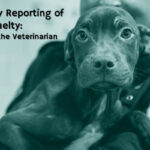Cold weather brings with it a myriad of implications, affecting not only human habitations but also the delicate ecosystems and the myriad forms of life that inhabit them. Delving into this multifaceted topic reveals the nuances and complexities associated with frigid climates. The exploration of cold weather encompasses environmental impacts, physiological adaptations of animals, safety precautions, and the socio-economic ramifications as well.
Cold weather significantly alters landscapes, transforming vibrant ecosystems into serene, albeit harsh, winter wonderlands. Snow blankets the terrain, creating a stunning visual tapestry but also posing challenges to flora and fauna alike. The frozen ground complicates the availability of food, particularly for herbivorous species that depend on plant life for sustenance. Understanding the ecological ramifications of freezing temperatures necessitates a closer examination of how different organisms adapt to survive the elements.
Animals exhibit varied responses to cold weather, with some species migrating to warmer locales while others employ physiological adaptations to endure the bitter cold. Migration is a well-documented strategy among avian species, such as geese and swallows, which travel thousands of miles to escape the inhospitable conditions. This instinctual behavior underscores the intricate biological clocks that govern these creatures, often dictated by photoperiod and temperature cues.
Conversely, many terrestrial mammals have evolved remarkable physiological adaptations to withstand frigid temperatures. For instance, the Arctic fox dons a thick, insulated coat of fur that not only provides warmth but also changes color with the seasons, transforming from brown in summer to white in winter. Additionally, animals such as bears enter a state of hibernation, drastically reducing their metabolic rates to conserve energy during periods of food scarcity. This dormancy allows them to survive months of harsh conditions while relying on fat reserves accumulated during the more temperate months.
While the adaptations of animals are fascinating, cold weather also presents significant risks to both wildlife and pet owners. Pet owners must take extra precautions to ensure the welfare of their animals during chillier months. Just as humans bundle up in layers to guard against the cold, pets require similar considerations. Dogs, particularly those with short hair or small stature, may benefit from sweaters or coats when venturing outside. Moreover, it is paramount to ensure that pets have access to unfrozen water; dehydration can occur even in cold weather if animals are unable to drink. Foot protection is also essential, as ice and salt can irritate sensitive paw pads, leading to discomfort and potential injury.
The dangers of cold weather extend to wildlife as well. With dwindling food supplies, animals face greater competition for nourishment, making them more susceptible to starvation. Additionally, severe cold can lead to frostbite, particularly for limbs and extremities. Species that rely on seasonal migrations may struggle due to habitat loss and altered weather patterns driven by climate change. As temperatures fluctuate, previously predictable migratory routes become erratic, displacing many species and disrupting established ecological balances.
Beyond the animal kingdom, the socio-economic implications of cold weather are pronounced. Economically, regions that experience harsh winters often experience increased costs associated with heating, road maintenance, and healthcare. Moreover, the agricultural sector grapples with frost and snow that can devastate crops and disrupt planting schedules. Farmers must adjust their techniques and prepare for unpredictable weather patterns that threaten their yields. These changes may lead to increased food prices, impacting consumers and the broader economy.
Cold weather also raises critical concerns regarding public health. The frigid months often witness spikes in health-related issues, particularly respiratory ailments and hypothermia. Vulnerable populations, including the elderly and those without stable housing, can suffer grievously during extreme cold spells. Ensuring that individuals have access to warmth and shelter becomes paramount. Community outreach programs and governmental initiatives must address these vulnerabilities, especially as we witness fluctuations in weather severity.
Additionally, the psychological effects of long, cold winters should not be overlooked. Seasonal Affective Disorder (SAD) afflicts numerous individuals, leading to symptoms of depression and anxiety as sunlight diminishes. This cycle underscores the importance of maintaining mental well-being, even during the darkest months. Strategies such as light therapy, exercise, and social engagement become pivotal in combating these winter blues.
As winter cloaks the landscape, it is crucial to acknowledge the interconnectedness of all life forms. The survival strategies of animals, the protective measures we take for our pets, and the societal implications of cold weather serve as reminders of our collective responsibility to both human and animal welfare. By understanding these complexities, we can better navigate the challenges posed by cold weather, fostering a harmonious existence with the natural world. Emphasizing awareness, preparation, and compassion will empower us to face winter’s stern demeanor with resilience and empathy.
In conclusion, cold weather presents a rich tapestry of influences that extend far beyond chilly temperatures. By examining the environmental, biological, and socio-economic dimensions of cold weather, we uncover the intricacies that define life amid the harsh realities of winter. This knowledge enables us to advocate for better protection of both wildlife and domestic animals, ensuring that the beauty of winter does not come at the cost of suffering or neglect.








